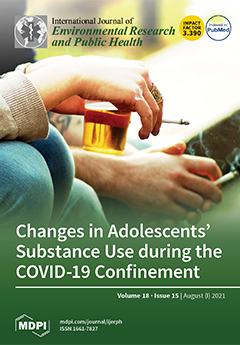Context: Acceptance and Commitment Therapy (ACT) is an emerging treatment for improving psychological well-being.
Objective: To summarize research evaluating the effects of ACT on psychological well-being in children with special health care needs (SHCN) and their parents.
Data Sources: An electronic literature search
[...] Read more.
Context: Acceptance and Commitment Therapy (ACT) is an emerging treatment for improving psychological well-being.
Objective: To summarize research evaluating the effects of ACT on psychological well-being in children with special health care needs (SHCN) and their parents.
Data Sources: An electronic literature search was conducted in PubMed, Web of Science, Ovid/EMBASE and PsycINFO (January 2000–April 2021).
Study Selection: Included were studies that assessed ACT in children with SHCN (ages 0–17y) and/or parents of children with SHCN and had a comparator group.
Data Extraction: Descriptive data were synthesized and presented in a tabular format, and data on relevant outcomes (e.g., depressive symptoms, stress, avoidance and fusion) were used in the meta-analyses to explore the effectiveness of ACT (administered independently with no other psychological therapy) compared to no treatment.
Results: Ten studies were identified (child (7) and parent (3)). In children with SHCN, ACT was more effective than no treatment at helping depressive symptoms (standardized mean difference [SMD] = −4.27, 95% CI: −5.20, −3.34;
p < 0.001) and avoidance and fusion (SMD = −1.64, 95% CI: −3.24, −0.03;
p = 0.05), but not stress. In parents of children with SHCN, ACT may help psychological inflexibility (SMD = −0.77, 95% CI: −1.07, −0.47;
p < 0.01).
Limitations: There was considerable statistical heterogeneity in three of the six meta-analyses.
Conclusions: There is some evidence that ACT may help with depressive symptoms in children with SHCN and psychological inflexibility in their parents. Research on the efficacy of ACT for a variety of children with SHCN and their parents is especially limited, and future research is needed.
Full article





